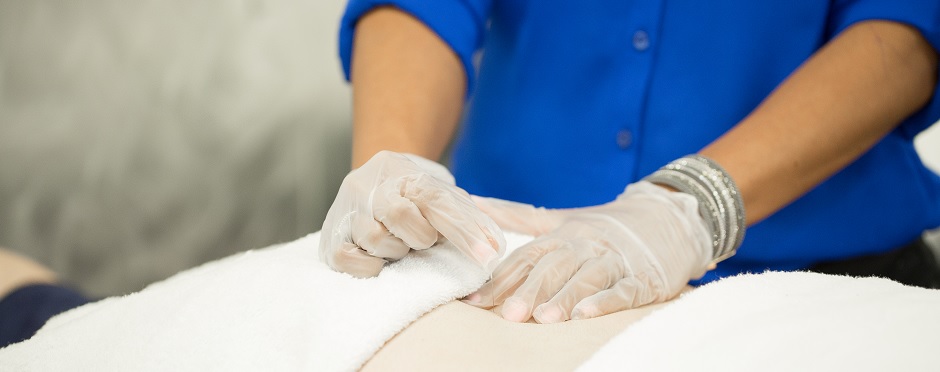
Why You Should Try Dry Needling The Next Time You Are In Pain
Leave a CommentTrigger point injections have been around since the 1940s, but dry needling has recently become the latest craze. Why? What is dry needling? And how could it help me?
Dry needling has many different philosophies and approaches. Some practitioners will perform trigger point dry needling, others will perform dry needling with needle retention, and some will even use dry needling with electrical stimulation. Ultimately, dry needling, no matter what form it is utilized in, triggers an inflammatory response to the tissue, promoting blood flow and healing.
So, What is Dry Needling?
Dry needling uses a very thin monofilament needle inserted into a muscle belly or other tissue. It is referred to as dry needling because nothing will be injected into the body. Dry needling can have local, segmental, and systemic effects. Local effects occur where the needle is placed and a nickel to quarter size around the needle within the tissue. These effects happen almost immediately upon needle insertion. Segmental effects occur quickly and last approximately 5-10 minutes through certain parts of the muscle. Segmental effects will help with pain relief throughout a particular body segment. Systemic effects occur when the needles are left in for 20 – 30 minutes at a time. This will cause an even greater inflammatory and systemic response to the needle to promote healing.
Dry needling can be performed in different ways. Pistoning, a type of dry needling, is when the needle moves like a piston in a car throughout the trigger point in the muscle belly. This may cause a twitch response. Winding occurs when the needle is twisted in the muscle belly, generating a more significant inflammatory response at the local site of the lesion. Retention is when the needles are left in the body for some time, typically to obtain a systemic response, as noted above.
Why Will Dry Needling Help Me?
It has been known for a very long time that blood supply helps tissues heal. When dry needling is performed, it will create a small “lesion” in the muscle or connective tissue, which causes bleeding-bleeding helps restore the normalcy of the tissue and reduce the amount of pain it is causing. However, dry needling alone is not the only answer. Dry needling coupled with stretching, muscular imbalance restoration, and strengthening will improve one’s condition.
What Can I Expect at My First Dry Needling Appointment?
At your first dry needling appointment, your practitioner will provide you with information regarding the process. You will then sign consent forms and begin to prepare for the needling. The next step is cleaning the skin before needle insertion. The practitioner will determine where the needles will be placed. They may mark spots on your skin or press around throughout the muscle. First, you will feel the guide tube being placed on the skin; this is what holds the needle. Next, you will feel a quick poke when the needle is inserted. As the needle is being moved throughout the muscle belly, you may feel a dull ache and even a twitch response; this is the response we are looking for. Depending on the type of needling used, the practitioner may leave the needles in or take them out. You can expect to have some increased soreness in the area following dry needling.
Curious about Dry Needling?
Reach out to an Athletico physical therapist! If you feel this is a treatment that may benefit you, contact your nearest Athletico and talk to one of our dry needling trained clinicians to get started. Schedule a Free Assessment today. Free Assessments are available in-clinic and virtually through our Telehealth platform.
The Athletico blog is an educational resource written by Athletico employees. Athletico bloggers are licensed professionals who abide by the code of ethics outlined by their respective professional associations. The content published in blog posts represents the opinion of the individual author based on their expertise and experience. The content provided in this blog is for informational purposes only, does not constitute medical advice and should not be relied on for making personal health decisions.
References
1. Cleveland Clinic. (2021, August 29). Dry needling: how it helps muscle pain. Cleveland Clinic. Retrieved February 7, 2022, from https://health.clevelandclinic.org/dry-needling-how-this-time-tested-method-sticks-it-to-muscle-pain/#:~:text=Dry%20needling%20for%20acute%20or,normal%20mobility%20with%20less%20pain.
2. Falsone, S. (n.d.). Foundations in orthopedic rehab and sports performance.
3. Kalichman, L., & Vulfsons, S. (2010). Dry needling in the management of musculoskeletal pain. Journal of American Board of Family Medicine.
